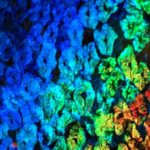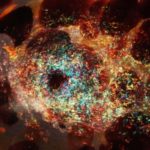Paper, Squid camouflage may lead to next gen of bio-inspired synthetic materials
Reflectin proteins are widely distributed in reflective structures in cephalopods. However, only in loliginid squids are they and the subwavelength photonic structures they control dynamically tunable, driving changes in skin color for camouflage and communication. The reflectins are block copolymers with repeated canonical domains interspersed with cationic linkers. Neurotransmitter-activated signal transduction culminates in catalytic phosphorylation of the tunable reflectins’ cationic linkers; the resulting charge neutralization overcomes coulombic repulsion to progressively allow condensation, folding, and assembly into multimeric spheres of tunable well-defined size and low polydispersity. Here, we used dynamic light scattering, transmission EM, CD, atomic force microscopy, and fluorimetry to analyze the structural transitions of reflectins A1 and A2. We also analyzed the assembly behavior of phosphomimetic, deletion, and other mutants in conjunction with pH titration as an in vitro surrogate of phosphorylation. Our experiments uncovered a previously unsuspected, precisely predictive relationship between the extent of neutralization of a reflectin’s net charge density and the size of resulting multimeric protein assemblies of narrow polydispersity. Comparisons of mutants revealed that this sensitivity to neutralization resides in the linkers and is spatially distributed along the protein. Imaging of large particles and analysis of sequence composition suggested that assembly may proceed through a dynamically arrested liquid–liquid phase-separated intermediate. Intriguingly, it is this dynamic arrest that enables the observed fine-tuning by charge and the resulting calibration between neuronal trigger and color in the squid. These results offer insights into the basis of reflectin-based biophotonics, opening paths for the design of new materials with tunable properties.
Learn about our two Decals!
 Click here to find out more about our Fall Bioinspired Design Decal and our Spring Bioinspired Design in Action Decal – ALL MAJORS are welcome.
Click here to find out more about our Fall Bioinspired Design Decal and our Spring Bioinspired Design in Action Decal – ALL MAJORS are welcome.Berkeley BioDesign Community
 Click here to learn about the BioD: Bio-Inspired Design @ Berkeley student organization or here to signup for more info.
Click here to learn about the BioD: Bio-Inspired Design @ Berkeley student organization or here to signup for more info.Search
Student Login





I imagine that the neurological circuits underlying these processes are governed by both 2d spacing maps with their brains as…
to reduce the impact of car accidents, it may be possible to study the force diverting physics of cockroaches to…
you see this type of head-bobbing stability in many avian creatures related to pigeons like chickens. the head ability to…
not like they taught horses how to run! this is an example of convergent evolution where both sea creatures and…
The brain functions in a similar way with neuronal connections. our brains are able to utilize the multiplicity of connections…